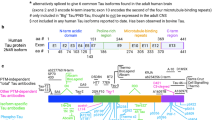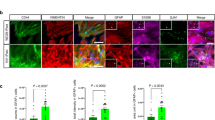Abstract.
We immunohistochemically and ultrastructurally studied basophilic inclusions (BI) in a patient with adult-onset sporadic motor neuron disease (MND). BI were frequently observed not only in degenerated anterior horn cells, such as central chromatolytic neurons, but also in normal-appearing large anterior horn neurons. They had various shapes, round, elliptical or irregular, and occasionally they had distinct basophilic rims. They also varied in size. There were no halos around them nor core in their centers. Immunohistochemically, some BI were immunostained for ubiquitin or SOD1, but BI were not immunoreactive with anti-phosphorylated neurofilament (SMI 31), phosphorylated tau, cystatin C or Golgi (MG-160) antibodies. Ubiquitin-positive skein-like inclusions (SI) were occasionally observed in the somata of anterior horn neurons. Ultrastructurally, BI consisted of filamentous structures associated with granules, which were attached to thick filaments. The thick filaments were straight without constriction or side arms and their diameter was twice that of the neurofilaments. BI occasionally contained tubular structures among the granule-associated filaments. The granulo-filamentous profiles varied from being compactly arranged to being more loosely packed. The structure of BI resembles that of the Lewy body-like hyaline inclusions (LBHI) observed in sporadic MND patients. Bundles of filaments resembling SI, which were composed of compactly packed filaments without fine granules running parallel to the longitudinal axis, were frequently observed inside or at the periphery of BI, and occasionally clustered in the perikarya. Each filament measured approximately 15–25 nm in diameter, and a bundle of these grouped filaments was sometimes surrounded by a unit membrane. We also occasionally observed in-between structures of BI and bundles of filaments resembling SI. These findings suggest a certain relationship between BI, SI and LBHI in the pathomechanism of BI development. Further studies are needed to elucidate whether sporadic adult-onset MND characterized by BI forms a different subtype of MND.
Similar content being viewed by others
Author information
Authors and Affiliations
Additional information
Electronic Publication
An erratum to this article is available at http://dx.doi.org/10.1007/s004010100422.
Rights and permissions
About this article
Cite this article
Sasaki, S., Toi, S., Shirata, A. et al. Immunohistochemical and ultrastructural study of basophilic inclusions in adult-onset motor neuron disease. Acta Neuropathol 102, 200–206 (2001). https://doi.org/10.1007/s004010100371
Received:
Revised:
Accepted:
Issue Date:
DOI: https://doi.org/10.1007/s004010100371




